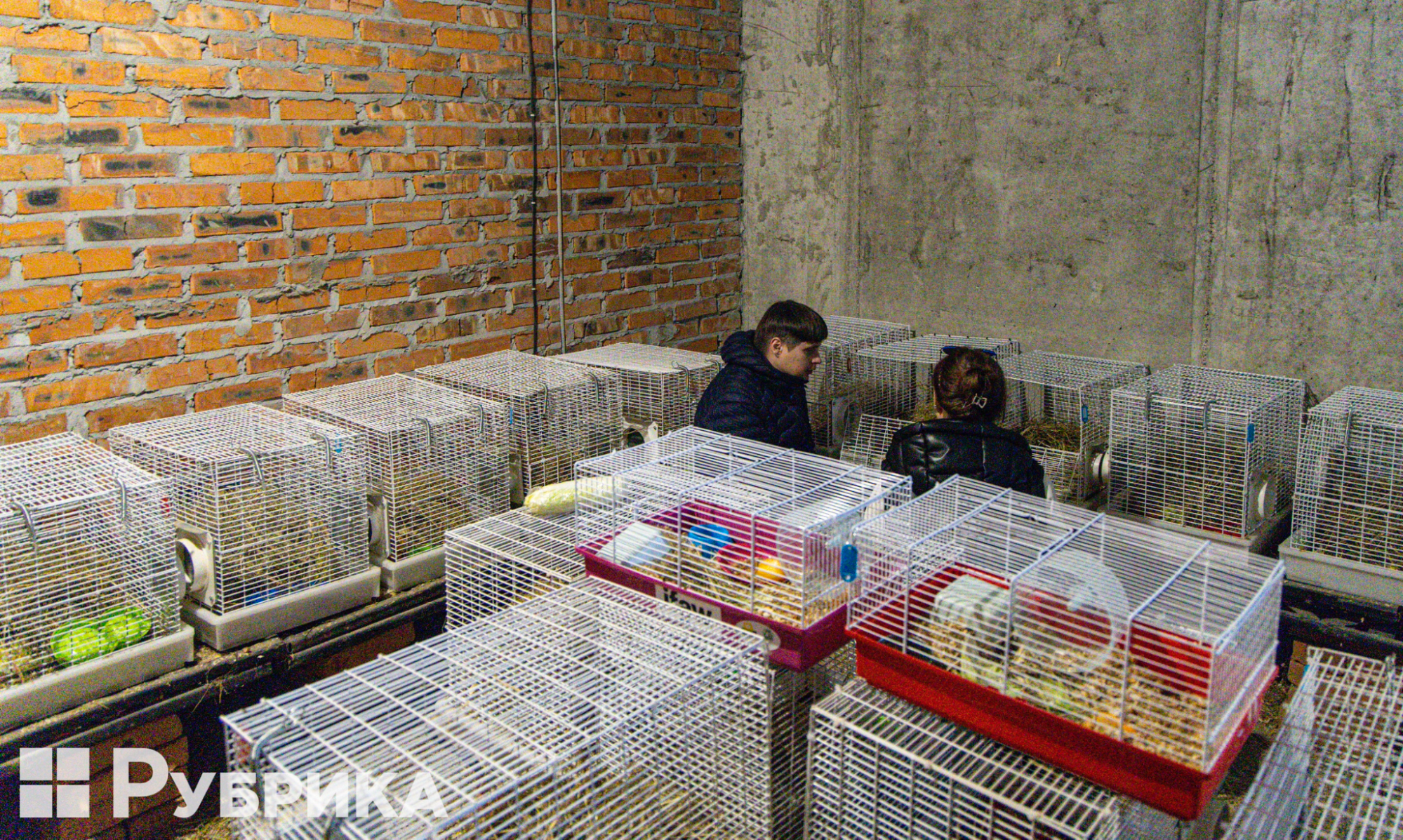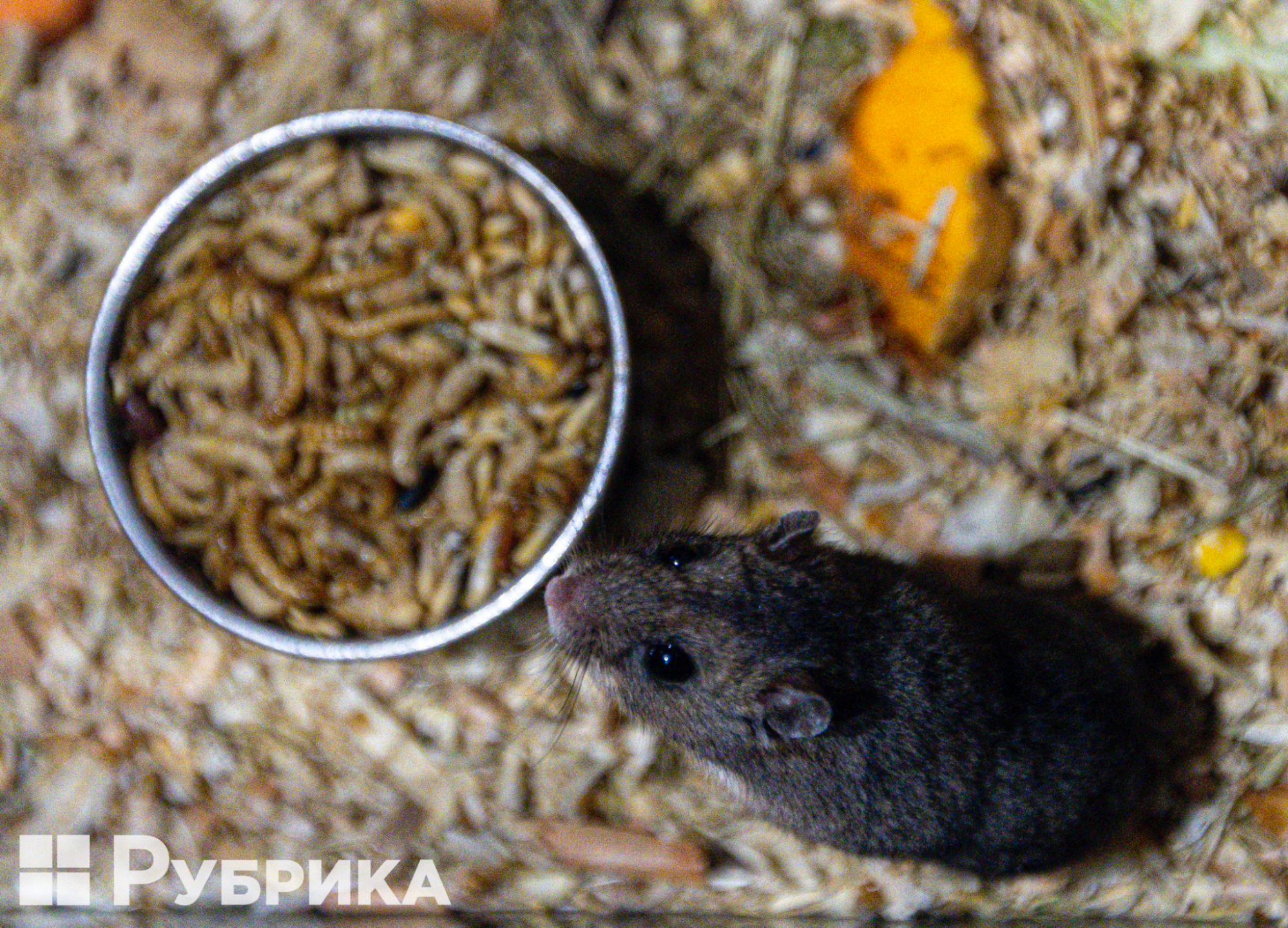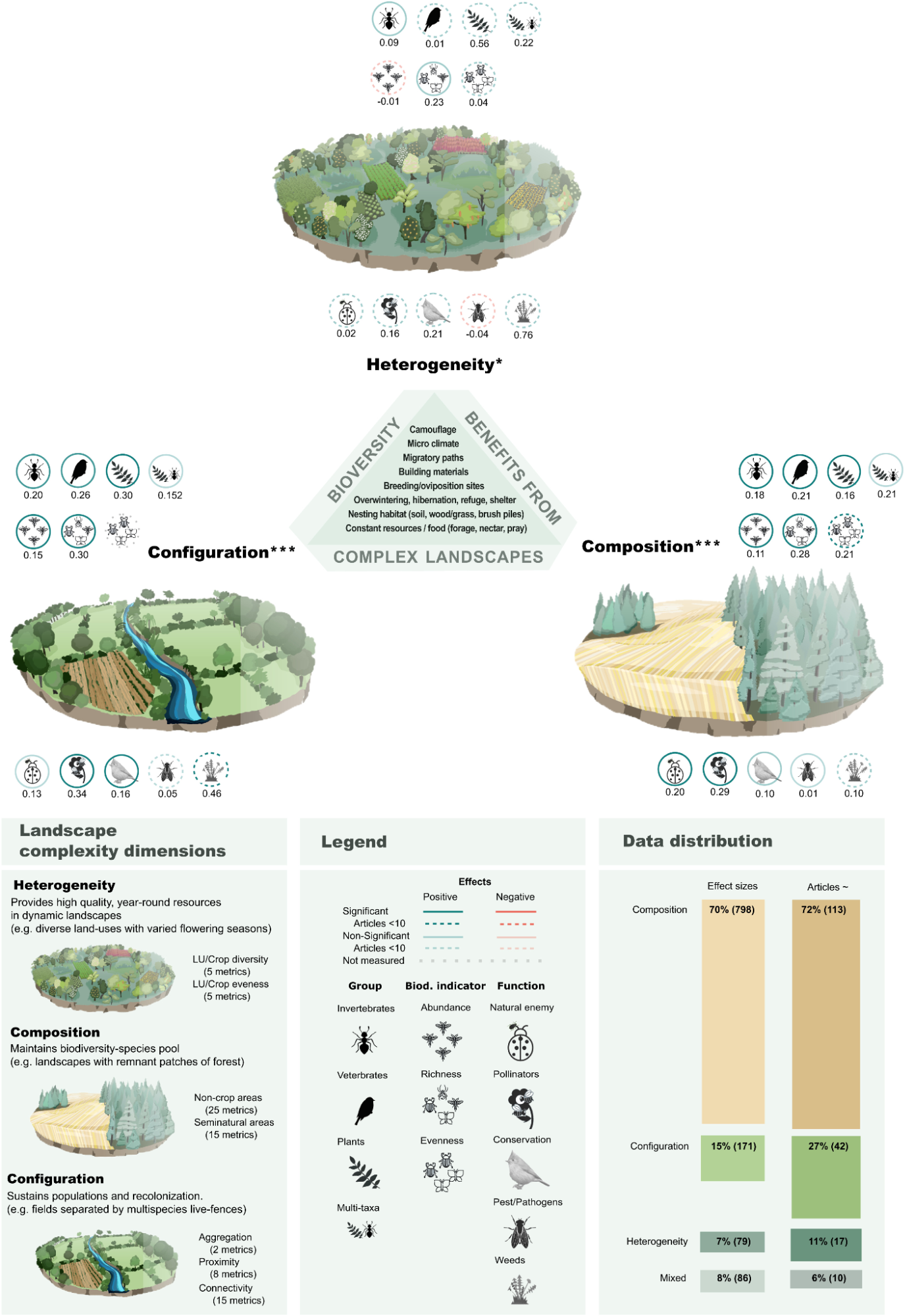
Mykhailo Rusin keeps the hamsters in a small room of a new building on the territory of the Kyiv Zoo, which is now a bomb shelter.

Mykhailo Rusin is a researcher at the Kyiv Zoo.
Several species of hamsters live here. The largest of them is from the era of gigantism and once coexisted with dinosaurs — the European hamster, listed in the Red Book of Ukraine, can weigh up to one kilogram. This species survived the ice age but may not survive the intervention in its biotopes by creatures more dangerous than dinosaurs — humans.

European hamster — a Red Book species, a resident of the Center for the Restoration of Rare Species at the Kyiv Zoo.
Rusin is a Candidate of Sciences and has devoted most of his professional career to studying rodents. Rusin is a researcher at the Kyiv Zoo and cares for the hamsters at the Center for the Restoration of Rare Species. Hamsters are bred here to release them into the wild later. In 2023, the scientist received a grant and created the Hamster Rescue Center.
Rubryka asked the scientist why such a center is needed and what problem it can solve.
What is the problem?
Farmers have long struggled with rodents that spoil crops. Mice, rats, and, as it turns out, wild hamsters, even in a small group, can cause quite a bit of damage. Of course, they will not eat a ton of beets, but each of them can be bitten, and such a product can no longer be sold.
Farmers' way out of the situation is simple — mousetraps and rat poison. However, hamsters are not the creatures that need to be hunted. Six species of hamsters living in Ukraine are included in the Red Book, and hunting them is prohibited by law.
However, the number of hamsters is constantly decreasing. This is a common problem across the continent. For example, in Poland, the hamster population has decreased by 75% over the past 40 years, similar to Western and Central European countries.

The number of hamsters is decreasing throughout Europe due to the fact that people occupy areas that were home to rodents.
They are at the very end of the food chain, but the most crucial factor is the rapid increase in the type of agriculture. Rusin explains that small private gardens that existed before the rapid increase in the amount of developed land and urbanization had at least some diversity: different types of vegetables and grains grown on relatively small plots created a diverse menu for feeding animals, particularly rodents.
Large agricultural fields with monocultures, on the contrary, do not ofer such a wide choice. Biodiversity research on agricultural land shows that in proportion to the increase in the number of territories developed by man for plowing, natural habitats decrease, leading to a decrease in biodiversity.

An infographic shows that the more land is developed for agricultural purposes, the fewer wild plants, animals, and insects there are. Source: ECA
Hamsters have nowhere to go — more and more of their natural habitats are being turned into fields, so hamsters are moving closer to villages or small farms, where there is something to eat.
What threatens the destruction of hamsters?
Nature skillfully heals any wounds, and when we lose one species of animals, others, more adapted to life, persevere. However, some capabilities or functions are lost — for example, ecosystem services and food chains are changing. We will never see some species again, such as the extinct European lion that lived in Western Europe or the turn — the last individual who became extinct in 1627.
Over the past 400 years, 63 species of mammals and 94 species of birds have disappeared from the face of the Earth due to unreasonable human activity, and 120 species of mammals and 187 birds are threatened with extinction. A philosophical question arises: "How many more species must disappear so people start treating the environment more carefully?".
"If we have a hundred species of animals left, is that too much or too little? And if ten? And three?" Rusin asks a rhetorical question.
After this, the question of the importance of saving hamsters no longer seems frivolous, no matter what ridiculous stereotypes we hear about these animals.
What is the solution?
Rescue and rewilding
The Center for the Breeding of Rare Species at the Kyiv Zoo is engaged in rewilding. First, rare species are removed from the wild according to all rules, propagated in favorable and safe conditions, and then sent to inhabit their native territories. For example, hamsters bred in the zoo were released in the Chernivtsi region, and together with Rewilding Ukraine, they were resettled in the Tarutyn Steppe for the last two years.
However, when conservationists settle some hamsters in the steppes, farmers destroy them in much larger numbers. Therefore, Rusin put forward his solution and created the Hamster Rescue Center.

Mykhailo Rusin, as a specialist, says that hamsters are quite aggressive creatures, contrary to stereotypes. Therefore, in order to avoid unnecessary fights that lead to injuries, hamsters are housed separately.
How does it work?
The center coordinator rummages through groups in social networks where farmers share their problems and seeks out those who complain about hamsters. Then, he and his colleagues visit such farmers and set up special safe traps that can be used to safely catch small rodents. However, despite the simple appearance, it is not easy to find such traps.
Rusin orders them from the USA or Canada. In Ukraine, such devices are not produced due to practically zero demand. In some cases, he turns to technology, and then the parts for the traps are printed already on 3D printers in Kyiv. Then, Rusin relocates the hamsters saved from death to safer places and areas not occupied by economic activity, which he finds by looking for fields on satellite images. Hamsters are saved, and a contribution to the preservation of biodiversity is made.
If you are bothered by hamsters, Rusin recommends not trying to catch hamsters on your own so as not to harm the animal. It is worth remembering that hamsters, despite their size and pleasant appearance, are quite aggressive and have sharp teeth. A hamster can bite through a Kevlar glove, and the wounds from their bites are painful and take a long time to heal.

Hamsters build their homes in the form of burrows.
Will it work for sure?
In the year of the creation of the Hamster Rescue Center, it was already possible to save about 30 individuals — a small number on the scale of the country. Rusin understands this and, therefore, sets more global goals: not to save every hamster but to teach people to coexist with them.
People destroy hamsters mainly because of crop damage and fear of rodents carrying diseases. However, killing them is not an option.

The gray hamster is also a Red Book species in need of protection.
Rusin explains that the risk of contracting the disease is zero if you do not touch the hamster with your hands and do not try to catch it. If we are talking about vegetables spoiled by hamsters, the usual heat treatment that occurs during cooking will completely protect a person from infection.
As for crop damage by hamsters, there is a solution. It is only necessary to better equip places for storing vegetables and grains, check the premises for cracks, and, if necessary, carry out repair work.
What other solutions exist?
In Europe, hundreds of volunteers save hamsters
Dozens of volunteers are rescuing wild hamsters in the Czech Republic and hundreds in Poland.
There is a breeding and rewilding initiative similar to the Kyiv one in Poland. There, the employees of the Poznań Zoo decided to take care of the endangered species and are already participating in animal protection projects. The local zoo started breeding hamsters in 2018.

A monument to the European hamster has been installed in the Polish city of Jaworzno. Source: universityteckie.pl
In the Polish city of Jaworzno, where a sharp decrease in European hamsters has been recorded since 2016, authorities are taking measures to protect hamsters in their area. In addition to scientific research, educational campaigns are aimed at farmers, schoolchildren, and teenagers. The city council decided to create a 270-hectare environmentally friendly facility, European Hamster, to protect these animals. During the project's first five years, the imported hamsters spread, as evidenced by the number of burrows and their location.
Small gardens are better than tillages
A global meta-analysis by the University of Michigan shows that complex, i.e., diverse agricultural landscapes contain significantly more biodiversity than simpler ones, regardless of size. Simply put, where more plants flower in different seasons and small private gardens, there will be more wild plants, birds, and animals than in continuous plowed land or small agricultural fields separated by forest strips.

The infographic demonstrates the dependence of the complexity of the agricultural landscape on the amount of biodiversity. Source: Complex agricultural landscapes host more biodiversity than simple ones: A global meta-analysis
Reducing the number of cultivated fields by 30%, toward which Ukraine is heading as one of the goals of European integration, should increase the number of natural biotopes, which will positively affect the amount of biodiversity in the future.
However, the most important solution is each person's inner awareness and active efforts to learn to live in harmony with nature and finally stop fighting with it.






